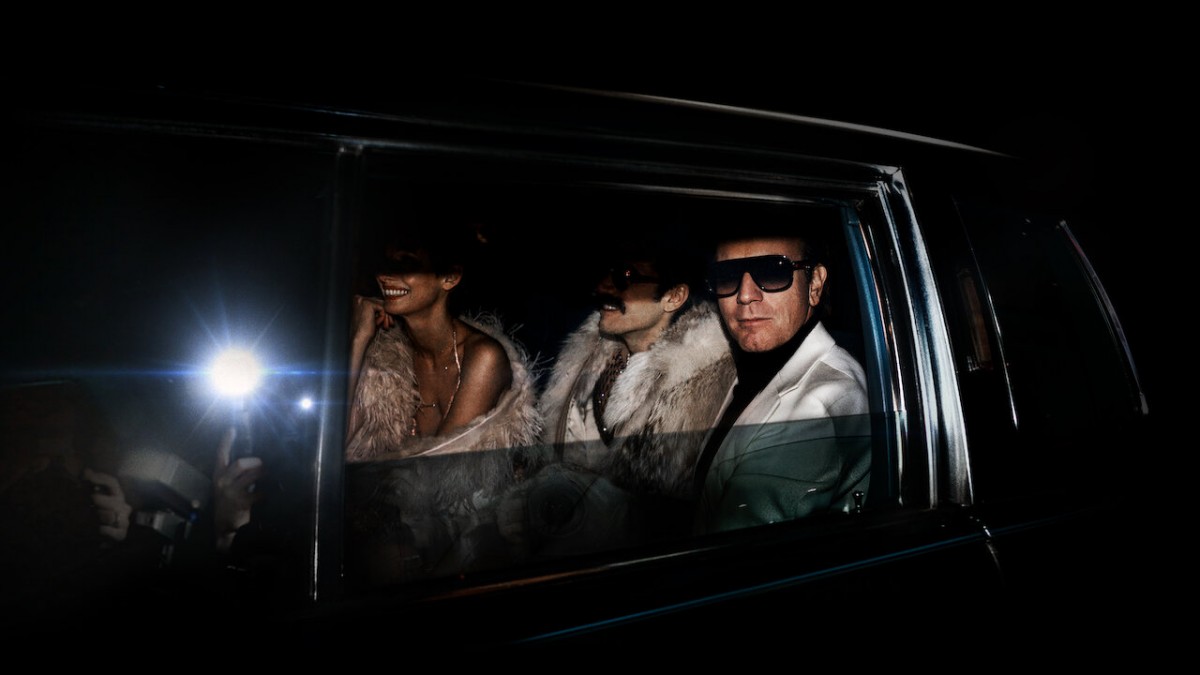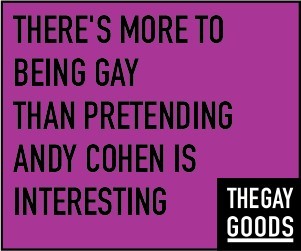At this point in Ryan Murphy’s career, I feel it only fair to send out a warning to gay Indiana men. Stay away!
After turning The Prom (set in a small Indiana town) from a frothy Broadway delight into a lugubrious Netflix movie, Murphy got his hands on a limited series about another fellow Hoosier, fashion designer Halston. And the result is a very watchable mishmash of exhausted tropes, the fetishization of the Studio 54 era, and self defense.
For those who are unfamiliar, Roy Halston was and created many things. Among them: He helped invent Liza Minnelli’s signature style; he invented ultra suede; he revolutionized women’s fashion; he was a defiantly out man in a closeted era; and he served as a cautionary tale in almost every aspect of his life, from excruciatingly bad business decisions to living a life of decadent excess that quickly turned seedy.
That comes through in Halston to a degree. That degree is dependent on whether or not Murphy (who is credited as a co-writer on all five episodes) feels he can justify his own career through the lens of an egomaniacal gay white man who over identifies with every minority, treats those around him abominably, and delights is dismissing quibbling critics with a wave of an imperious hand.
Through it all, Ewan McGregor struts through the series in a series of black turtlenecks, an ever-present cigarette, and a vocal choice that seems based more on a slightly butcher Truman Capote than anything else. We see Halston smoking, sniffing cocaine, sniffing poppers, cowering, screaming, crying, fucking, and whining. What we rarely see is Halston designing.
That’s a problem, because for once we have a series about a creative genius with a demonstrable talent. A biopic about an actor or singer? We can see and hear the recreated finished product, but we can’t truly witness the moment of its creation. With a designer, we should revel in seeing how his eye and his innate fashion sense transformed a bolt of fabric into something that defined a certain type of woman in the 1970s.
There are fleeting moments of this in the first two episodes, in which we see him pinning a dress around Minnelli’s body and creating an instantly recognizable classic. And his muse and co-creator, Elsa Peretti, has a few moments of contribution as well, as when she instinctively knows the problem with her dress is that she needs to pin up her hair.
But the Halston of Halston, for all of McGregor’s lip service to playing a tortured genius in a series that isn’t about his sexuality, isn’t here to introduce a new generation to one of the all-time great American designers. This Halston is here to recreate a world in which sex and drugs were ubiquitous, where bad behavior was excused because it’s in service to something striking and original.
We’re a few thousand miles away from that last trope, I had thought, particularly in the wake of the Scott Rudin allegations. And yet Halston throws away the people in his life as easily and blithely as he snorts a week’s worth of cocaine in a day. There’s no settling of accounts at the end, either, no true feeling that he understands what his egomania has cost him. Even as he sees his company and actual name taken from him, the blame, he insist, rests solely on the shoulders of other people. And directly below those shoulders, the traitors are probably wearing Calvin Klein.
The moment of release we are granted is not that of a man reconnecting with the people who believed in him (though we are treated to a reconciliation with David Pittu’s Joe Eula, who mainly serves as a walking conscience and janitor when the illustrator deserves so much more). Instead, we find Halston finally embraced by critics in the reviews of Martha Graham’s Persephone, danced at New York City Center.
They all—The New York Times included!—are over the moon about Halston’s costumes, one headline crowing that Graham needed to move over. For once, Halston gets the approval from authority figures that (according to the series’ dimestore psychology) he sought since his father turned out to be distant and homophobic.
But those reviews are all fictional. Cheap wish fulfillment on Murphy’s part. Murphy, after all, has the recognition of his peers, of acting legends he looked up to growing up in Indiana, and a substantial Netflix deal. But the critics remain elusive. (Hi.) Like a true monomaniacal artist, he can’t help but reveal his obsessions via his work. Too bad Halston got sacrificed to give Murphy the fictional catharsis he craves.





